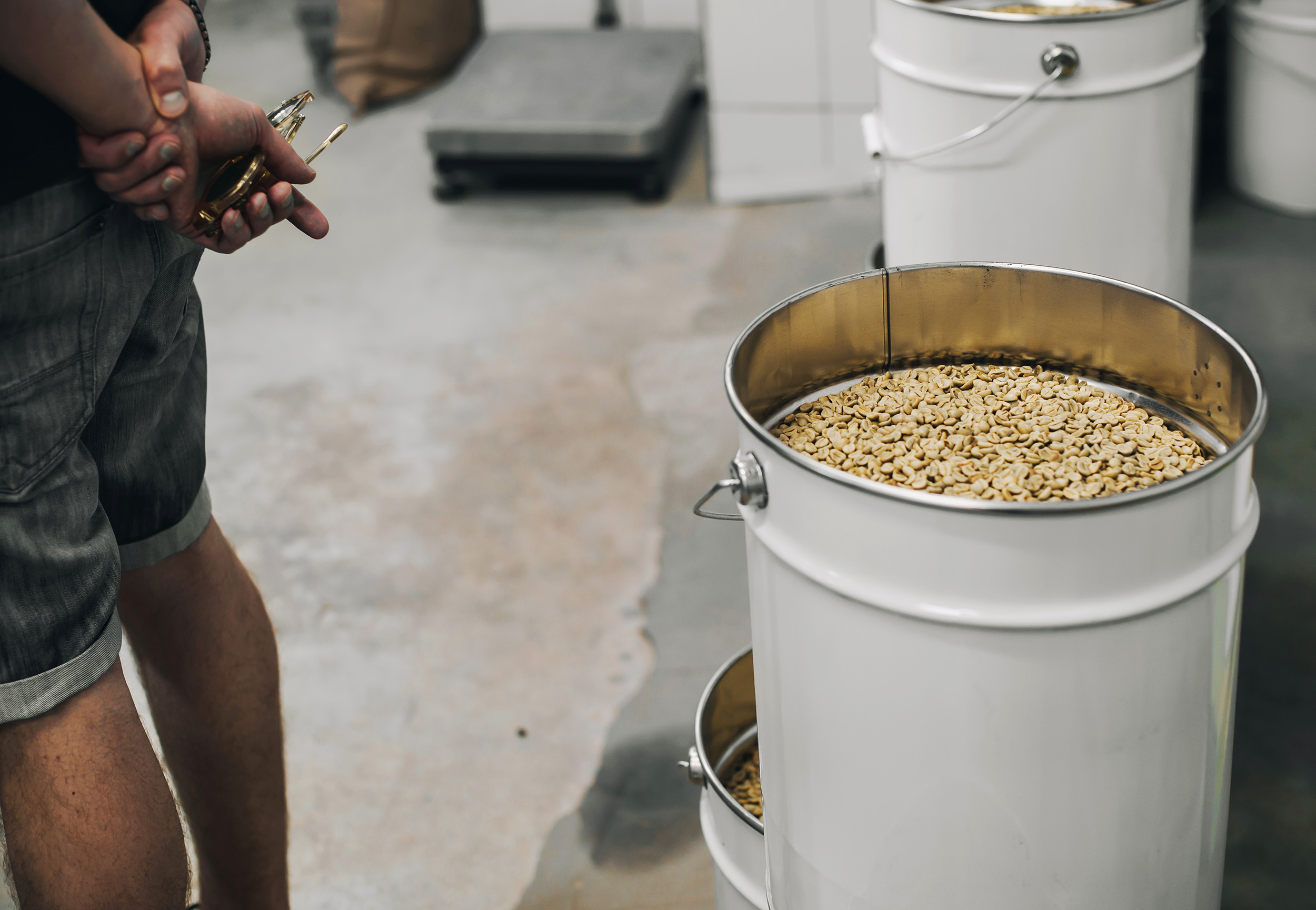The final step in preparing for a day’s roasting is to decide on how many batches of each coffee you need to produce that day and what order to roast them in. You can then use the time while the machine is warming up to weigh out the first 10–20 batches you plan to roast.
 For maximum efficiency, while the roaster is heating up, weigh out the batches of green coffee you’ll need.
For maximum efficiency, while the roaster is heating up, weigh out the batches of green coffee you’ll need.
Begin by determining the total amount of coffee you need to roast: tally up the amount of roasted coffee you’ll need, and then calculate the amount of green coffee this equates to. To do this, divide the amount of roasted coffee you need by the expected yield, as explained in Lesson 2.02.
If at all possible, round up the amount of green coffee you plan to roast, so that all the batches you roast on a given day are the same size. Changing batch size greatly complicates the roasting process. You need to use a transitional BBP when changing batch size, as well as a different BBP for each batch size. In addition, you might also need to change airflow or drum RPM for optimal results. Each of these changes creates an opportunity for you to make a mistake.
Next, plan your roasting schedule. It’s best to begin with the batches that need the smallest amount of thermal energy and gradually progress towards the batches that need more thermal energy. In this way, the machine can gradually get hotter over the course of the day as you progress towards the roasts that require higher gas settings and hotter end temperatures.
You should roast in the following order:
- Smaller batches first (if you absolutely must change batch size)
- Lighter roasts first
- Smaller beans first
- Natural coffees before washed
These factors are listed in order of importance — in other words, darker espresso roasts should come after lighter filter roasts,